
There¡¯s nothing like a great baseball story. But baseball has been around a long time, and in some cases, it can be hard to tell whether those stories are too good to be true. Which is why MLB Mythbusters is here to help -- we'll be diving into some of the game's greatest legends, trying to separate fact from fiction.
Next up: Reexamining one of the most famous slides in baseball history.
The myth: Matt Holliday didn't touch home plate when he scored the winning run for the Rockies in Game 163, wrongly costing the Padres a spot in the postseason.
The context: At precisely no point during the 2007 season did it seem like the Rockies were bound for the postseason.
Colorado had gone 76-86 in '06, the ninth consecutive year in which they'd finished either fourth or fifth in the NL West. On the morning of May 22, 2007, they sat at 18-27. On the morning of Aug. 24, they were 64-63. They were 4 1/2 games back of the Padres for the NL's Wild Card spot with six games left to play. They were two back with two games left to play, looking on helplessly as San Diego came within a single strike of the win that would send them to the postseason.
But that strike never came, the Padres' celebration foiled by -- and I swear I'm not making this up -- a game-tying triple from Tony Gwynn Jr. San Diego eventually fell to Milwaukee in extra innings, then lost again the next day, and suddenly, miraculously, after 13 wins in their final 14 games, the Rockies had done the unthinkable: They'd pulled dead even atop the Wild Card standings, forcing a Game 163 with a spot in the NLDS on the line. A coin flip decided that it would be held at Coors Field, setting the stage for one of the wildest do-or-die contests in baseball history.

It's only fitting that Colorado entered as they had all year: as heavy underdogs. Not only had the Rockies been a mediocre team for most of the year, hovering around .500 until catching fire down the stretch, but now they had to face Padres ace Jake Peavy -- the league's ERA and strikeout leader that year, a few weeks away from being named NL Cy Young winner. Colorado's answer? Josh Fogg, he of the 5.03 career ERA.
So of course the Rockies knocked Peavy around for 10 hits and six runs. It probably should've been even more, too: In the bottom of the seventh, Garrett Atkins hit what sure looked like a home run over the left-field fence, only for umpires to rule that the ball had caromed off the top of the fence.
Heath Bell came on and got out of the jam, keeping Colorado's lead at just one run ... which would loom large a half-inning later, when Brian Giles drove a two-out double to left to knot the score at six.
That's where it remained until the 13th, when Scott Hairston launched a two-run homer to give the Padres the lead. San Diego was at the doorstep yet again, three outs away from the postseason with future Hall of Famer Trevor Hoffman making his way to the mound.
The moment: As quickly as the Padres had finally grabbed the lead, they gave it all back: Kaz Matsui and Troy Tulowitzki led off with back-to-back doubles, bringing up Matt Holliday with the tying run in scoring position.?
Holliday was exactly who the Rockies wanted at the plate in that spot -- 2007 had been his coming-out party, winning the batting title and hitting 36 homers and finishing (unjustly, to everybody in the state of Colorado) second in NL MVP voting. And he came through one more time here, lifting one just over Giles' head in right for a game-tying triple.
With Coors Field absolutely losing its mind, Hoffman intentionally walked Todd Helton, putting runners on the corners with no one out for infielder Jamey Carroll. Carroll jumped on the first pitch he saw, hitting a line drive directly at Giles in right. Holliday -- at 6-foot-4, 240 pounds, not exactly the swiftest guy on the bases -- tagged up, looking to come home with the winning run and send the Rockies to the NLDS for the first time since 1995.
The throw beat Holliday to the plate by a hair, but catcher Michael Barrett couldn't handle the hop cleanly, and as Holliday slid into Barrett's left leg the ball went rolling away towards the third-base dugout. Holliday, whose face had smacked against the dirt as he dove, laid on the ground in a daze. Barrett picked up the ball and took a step towards him, unsure whether the play was still live -- home plate umpire Tim McClelland hadn't yet made a call, seemingly leaving some doubt as to whether Holliday had touched home plate.?
McClelland waited ... and waited ... and waited, about 3 1/2 seconds that felt like an eternity. Finally, before Barrett could apply a tag, he made his decision: Holliday was safe.
Almost immediately, the controversy began -- no sooner had the first replay rolled back than Don Orsillo, calling the game for TBS, exclaimed, "I¡¯m not sure he ever got the plate!" His broadcast partner, Joe Simpson, agreed, as did most journalists in attendance (including Denver Post beat writer Mark Kiszla).
But in the days before instant replay, it didn't matter -- McClelland's call was the final word. The Rockies rolled all the way to its first World Series in franchise history. The Padres, meanwhile, haven't reached the postseason since, while their fans have spent the ensuing 13 years turning "Matt Holliday never touched home plate" into a meme.
The argument for: To put it lightly, history has not been kind to this side of the issue. The general consensus is that Barrett successfully blocked the plate with his foot, Holliday never did touch home and the Rockies were unjustly granted the win. Even now, over a decade later, the debate rages on:
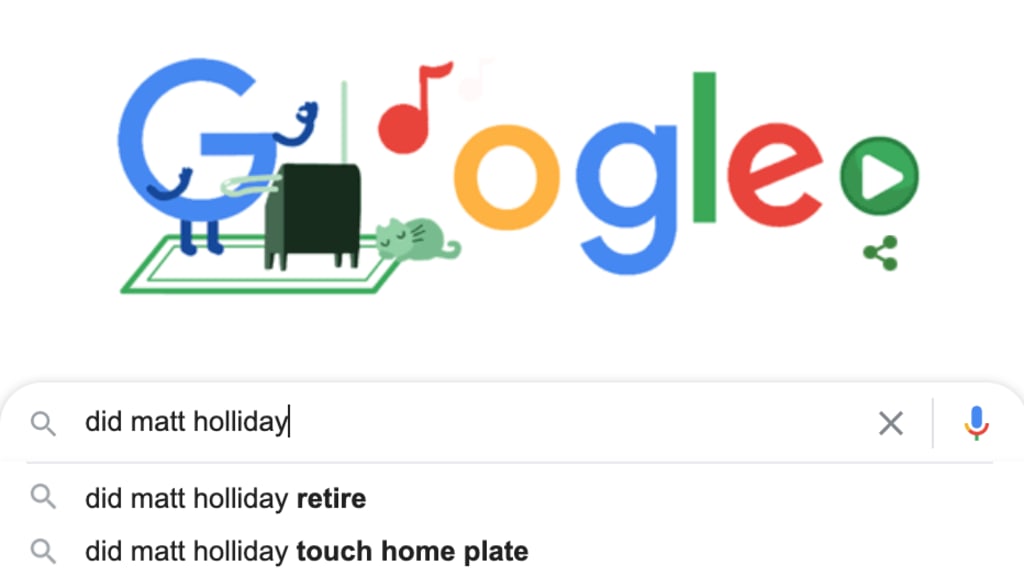
Colorado fans remain unapologetic, though -- and not without reason.
Start with the Atkins double in the seventh. It really, really looks like that ball cleared the yellow line, hit one of the fixed seats just over the wall and caromed back into play (for starters, I'm not sure how a ball could ricochet as violently as that one did while hitting only the top of the wall). If, as Padres fans have long wished, Game 163 had been played with instant replay, it's likely that the call on the field is overturned -- meaning that the Rockies take a two-run lead, rather than a one-run lead, into the eighth, and the game may well never even get to extra innings.
And then there's that final, fateful play. I won't waste your time: There is no camera angle showing Holliday definitively, or even probably, touching home plate. But even the most ardent Padres fans would have to admit that, in real time, it was an extremely difficult call to make -- it all happened so quickly, the ball arriving and Holliday colliding with Barrett while dirt flew all over the place, and I have no idea how McClelland could've said with certainty whether Holliday had touched home or not.
Which, really, is enough. It's telling that no Padre, player or coach, made much of an effort to argue the call in the immediate aftermath -- neither manager Bud Black nor Barrett himself?second-guessed McLelland, on the field or in postgame interviews. Orsillo and Simpson didn't start questioning it until they saw the replays. McClelland had to do the best he could with a genuinely bang-bang play; he could've called Holliday safe or he could've allowed Barrett to recover and make the tag, and either would've been understandable. He went with the former (OK, he hesitated for a while amid a raucous crowd and then went with the former) and while there isn't an angle that clearly shows Holliday touching home, there also isn't an angle that clearly shows him not touching home -- at least with enough certainty to overrule a call on the field.
Even if instant replay had been around in 2007, it's not a given that the result would've been different. (Not to mention that the score was still tied, with the red-hot Brad Hawpe coming to bat and the winning run on second.)
The argument against: Sure, there may not be an angle that leaves us 100 percent sure that he didn't touch home, but ... I mean, it very much looks like he never touched home.
There are four available angles of the play, not including the live one, which is simply too far away to be definitive. The first is from down the right-field line, and Barrett's positioning doesn't allow for a clear view:
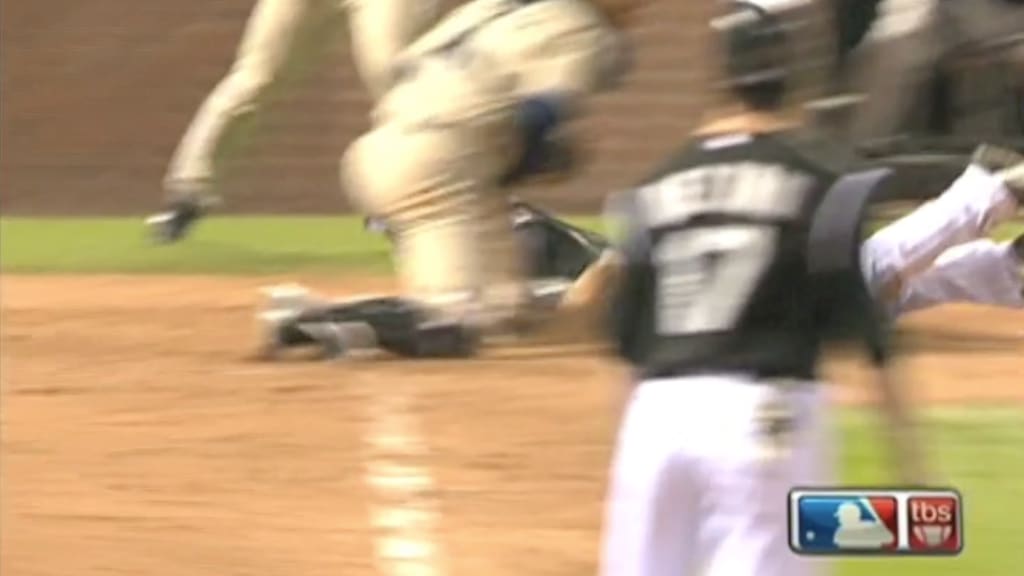
The second is from down the left-field line -- it certainly seems to give the impression that Barrett blocked Holliday from reaching the plate, but it doesn't allow us to see what went on behind Barrett's left foot, so it's still inconclusive.
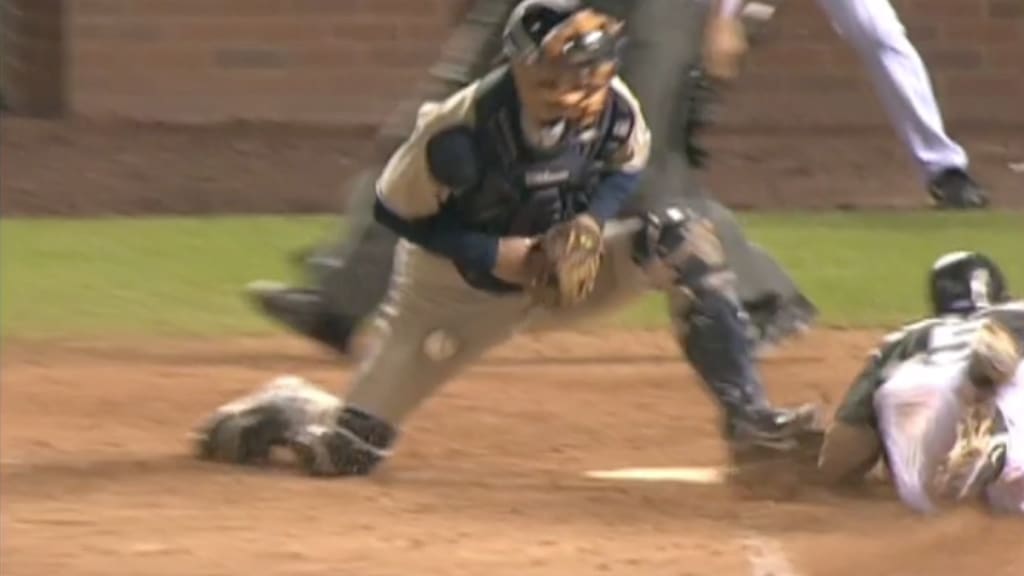
The third is from behind home plate, but a little lower than the live angle. While Holliday's hand seems blocked initially ...
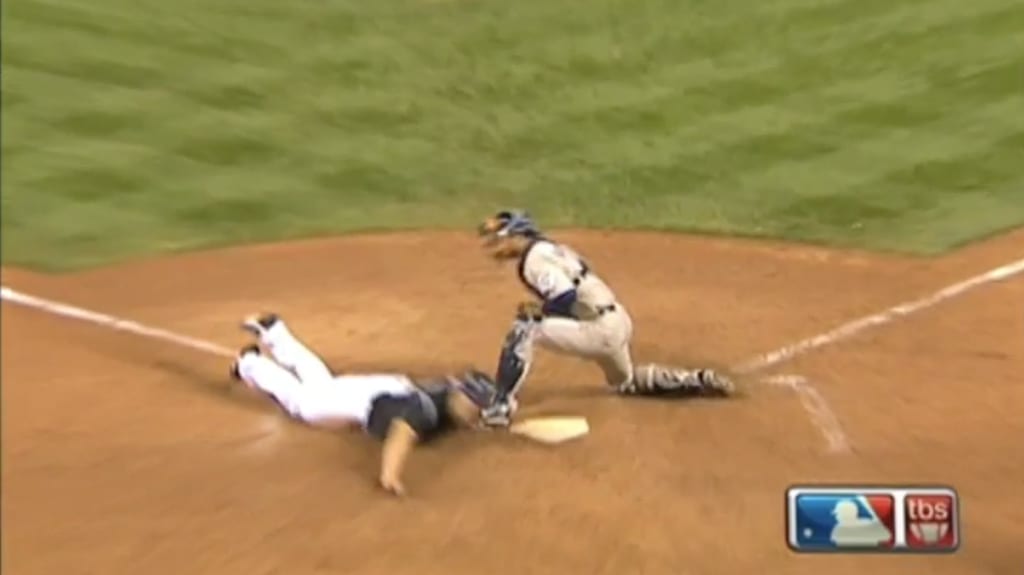
His body soon slides into the way, blocking our view of what happens to Holliday's hand as his momentum takes him past the plate:
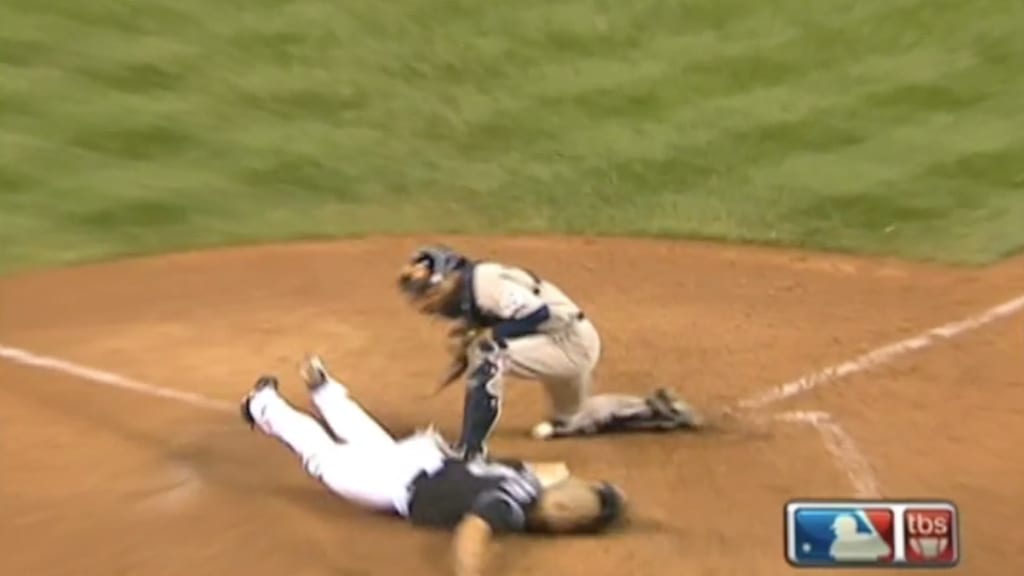
What is going on behind Holliday there? We know his hand was blocked from touching the plate initially, but where is it in the moments after? That brings us to our final angle, from foul territory along the first-base side:
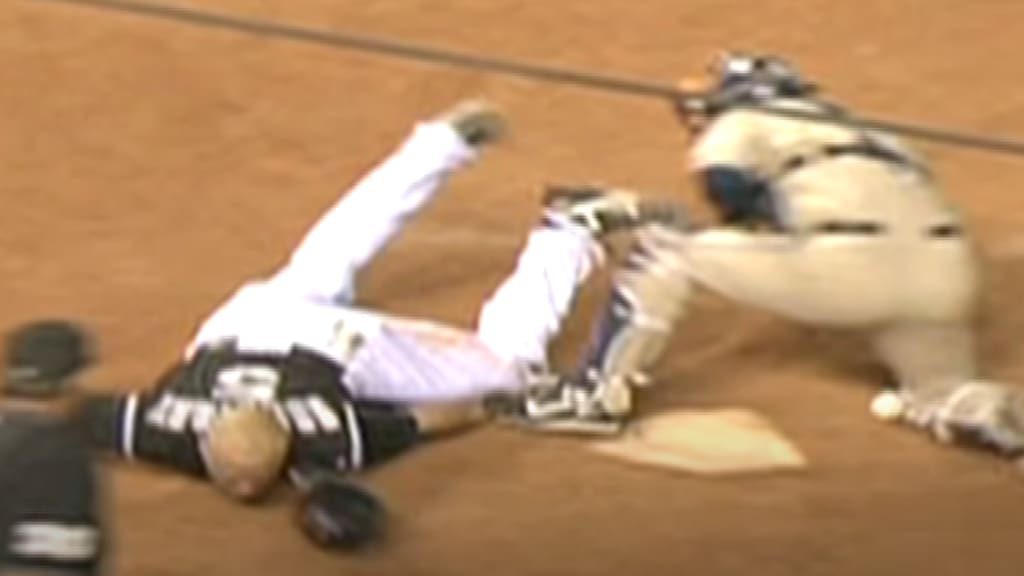
This is roughly the moment at which Holliday's hand leaves our view in the home-plate angle, and it certainly seems to suggest that -- unless his hand is somehow sneaking under Barrett's cleat there -- he never managed to reach home plate. No one angle is conclusive, but pieced together, they present a very convincing case.
The verdict: There is probably a 99 percent chance that Holliday never touched home. Looking at every angle, there just doesn't seem to be a window of opportunity: We know from the first-base angle that his hand didn't touch home when it first made contact with Barrett, and we know from the left-field angle that his hand slid around the side of the plate as Holliday went past. That part seems fairly clear-cut.
The more complicated question, however, is whether Padres fans are right to feel robbed. Yes, it's frustrating a likely-incorrect call ended the game, and San Diego's season -- call Holliday out, and there's only a runner on first with two outs and a legend in Hoffman on the mound. From there, who knows what happens. (Plus, the Padres looked to be in a better position had the game continued: Because the Rockies only got four innings from Fogg, they'd already used 10 pitchers, to just five for San Diego.)
But all of that ignores the Atkins home run in the seventh inning, an equally iffy call just as likely to have been overturned with instant replay with arguably as much of an impact on the final score. Colorado was gifted a run it probably didn't deserve, but really, it was making up for another run they'd been wrongly denied -- and which would've changed the entire complexion of the game.

